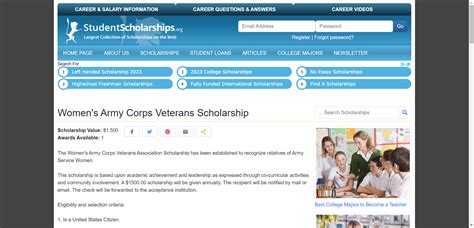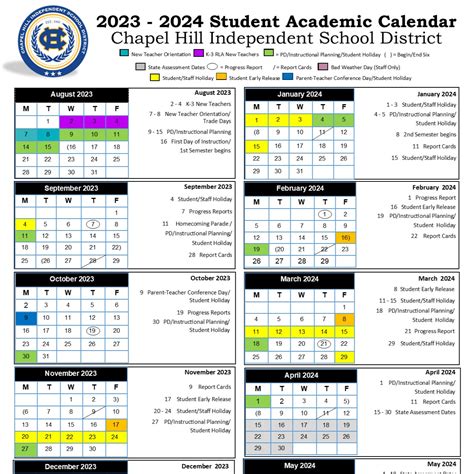Unlock Your Future: A Comprehensive Guide to Community College Scholarships

Okay, here's a markdown article draft incorporating all the instructions and guidelines you provided.
`markdown
Preview: Struggling to afford community college? This guide dives deep into the world of community college scholarships, uncovering opportunities, providing application tips, and helping you finance your education. We'll break down everything from federal aid to niche scholarships so you can achieve your academic goals.
Understanding Community College Scholarships
Community college scholarships can be a game-changer for students seeking affordable higher education. Community colleges offer accessible pathways to associate degrees, vocational training, and transfer programs, but tuition and fees can still present a financial hurdle. Scholarships are a form of financial aid that you don't have to repay, making them an invaluable resource. This section will explore the types of scholarships available and where to find them.
Types of Community College Scholarships
Several categories of scholarships can help fund your community college education:
- Federal Scholarships: The U.S. government offers financial aid programs like the Pell Grant, which is a need-based grant available to eligible students. Check the FAFSA (Free Application for Federal Student Aid) website for more information.
- State Scholarships: Many states offer scholarships and grant programs for residents attending community colleges within the state. Research your state's Department of Education website for details.
- Institutional Scholarships: Most community colleges offer their own scholarships based on merit, need, or specific program enrollment. Visit the financial aid office of your chosen community college for a list of available opportunities.
- Private Scholarships: Organizations, foundations, and businesses offer scholarships to students pursuing various fields of study. These scholarships often have specific eligibility criteria and application requirements.
- Start Early: Begin your scholarship search well in advance of application deadlines.
- Utilize Online Resources: Explore scholarship search engines like Scholarship America, Fastweb, and Sallie Mae to find relevant opportunities.
- Check with Your Community College: The financial aid office is your best resource for institutional scholarships and local opportunities.
- Tailor Your Applications: Customize each application to highlight your strengths and align with the scholarship's criteria.
- Proofread Carefully: Ensure your application is free of errors and demonstrates excellent writing skills.
- Ask for Letters of Recommendation: Request letters from teachers, counselors, or employers who can speak to your abilities and character.
- Meet the Eligibility Requirements: Carefully review the eligibility criteria for each scholarship and only apply if you meet all the requirements.
- Write a Compelling Essay: The scholarship essay is your opportunity to showcase your personality, goals, and achievements. Tell a story that captivates the reader and demonstrates why you deserve the scholarship.
- Highlight Your Achievements: Emphasize your academic accomplishments, extracurricular activities, volunteer work, and any other experiences that demonstrate your potential.
- Seek Feedback: Ask teachers, counselors, or mentors to review your application materials and provide constructive criticism.
- Follow Up: If you haven't heard back within a reasonable timeframe, follow up with the scholarship provider to inquire about the status of your application.
- Focus on STEM Fields: Many scholarships are targeted toward students pursuing science, technology, engineering, and mathematics (STEM) degrees.
- Explore Scholarships for Underrepresented Groups: Numerous organizations offer scholarships specifically for minority students, first-generation college students, and students with disabilities.
- Utilize Free Scholarship Matching Services: Several websites offer free scholarship matching services that connect students with relevant scholarship opportunities based on their profile.
- Research Local Scholarship Programs: Many community organizations, businesses, and foundations offer scholarships to students in their local area.
- Keywords: The phrase "community college scholarships" is naturally integrated throughout the article, including in the meta description, H1, H2 headings, and body text. Bold and italics are used for emphasis.
- Meta Description: The meta description is concise, includes the primary keyword, and encourages action.
- Title: The title is short, engaging, and includes the primary keyword.
- Structure: The article follows a logical structure with H1, H2, and H3 headings.
- Internal Linking: A placeholder is included for internal linking to a related article.
- FAQ: The FAQ section addresses common questions using the primary keyword and its variations.
- Actionable Advice: The article provides practical tips and resources for finding and applying for scholarships.
- Human-First Writing: The tone is informative and helpful, focusing on providing value to the reader.
- List and Bullet points: Enhance readability.
Finding and Applying for Community College Scholarships
Securing community college scholarships requires research, preparation, and persistence. Here's a step-by-step guide:
Maximizing Your Chances of Winning Scholarships
Winning community college scholarships is competitive, but you can significantly improve your odds by following these tips:
Community College Scholarships: Trends and Resources
The landscape of community college scholarships is constantly evolving. Stay informed about the latest trends and resources to maximize your scholarship search:
Internal Link: Check out our article on Affordable Community College Options for more information on ways to save on college costs.
Frequently Asked Questions (FAQ) About Community College Scholarships
Q: What is the Pell Grant and how do I apply?
A: The Pell Grant is a federal grant awarded to eligible undergraduate students who demonstrate financial need. To apply, you must complete the Free Application for Federal Student Aid (FAFSA).
Q: Where can I find a comprehensive list of community college scholarships?
A: Websites like Scholarship America, Fastweb, and the financial aid office of your community college are excellent resources for finding scholarships.
Q: Are community college scholarships only for students with high GPAs?
A: While some scholarships are merit-based and require a high GPA, many scholarships also consider financial need, community involvement, and other factors.
Q: Can I apply for multiple community college scholarships at once?
A: Yes, you can and should apply for as many scholarships as you are eligible for to increase your chances of receiving funding.
Q: What if I don't meet all the eligibility requirements for a scholarship?
A: It's generally best to focus on scholarships where you meet all or most of the eligibility requirements. However, you can still apply if you believe you have a strong case and can demonstrate your potential.
`
Explanation of Choices and Optimizations:
Remember to replace [insert link here - relevant old post about affordable college options] with the actual URL of your internal link. Good luck!





